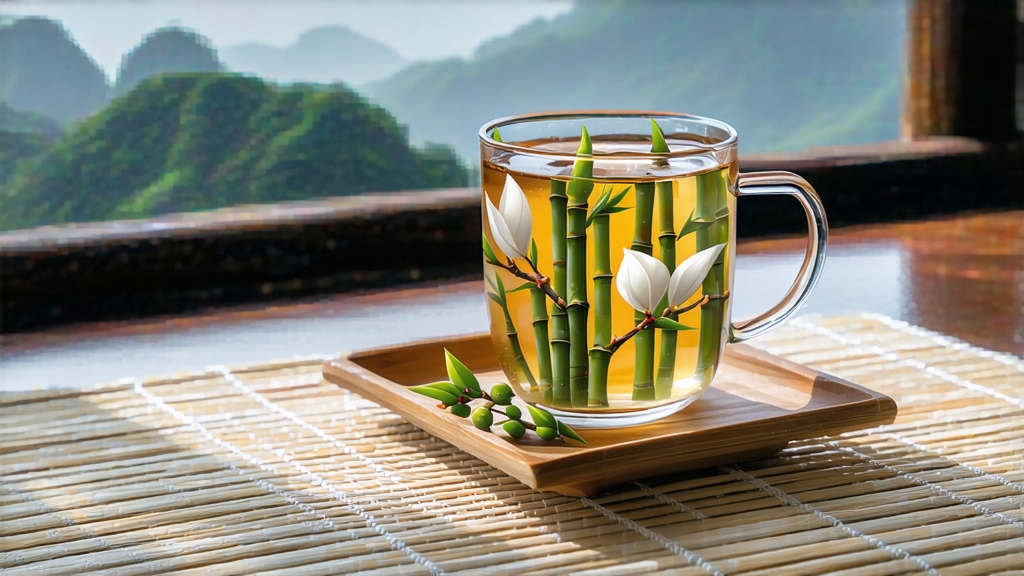
If green tea is the exuberant youth of Chinese tea and pu-erh the wise elder, then white tea—especially Fuding Silver Needle (Bai Hao Yin Zhen)—is the contemplative poet who arrives at dawn, speaks in hushed tones, and vanishes before the market crowd awakens. Grown along the granite hills and sandy loams of Fuding and Zhenghe counties in northeastern Fujian, Silver Needle is the most aristocratic member of the white tea family, picked only for a fleeting fortnight in early spring when the air is still cold enough to keep the leaf’s inner compounds tightly coiled. What follows is a two-hundred-year-old ritual of “making without making,” a process so gentle that the tea seems to create itself, yet so exacting that a single miscalculation of humidity can erase an entire harvest’s worth of silver luster.
History: From Imperial Tribute to Cold-War Confidential
The first written record of “white down tea” appears in the Song Dynasty treatise Da Guan Cha Lun (1107), yet it was not until 1796 that the county gazetteer of Fuding explicitly mentions “Yin Zhen” as a separately traded grade. By the Guangxu period (1875-1908) Silver Needle had become the opening tribute carried by fast horses along the maritime Silk Road to the tea courts of Russian czars, who prized its visual purity—an outward sign, they believed, of inner moral clarity. During the 1960s the tea gardens around Taimu Mountain were quietly fenced off; state scientists wanted to study the unusually high flavonoid content that helped Long March veterans resist altitude sickness. Thus, for two decades the West forgot Silver Needle existed, and when the bamboo fences finally came down in 1985 the re-emerged leaf carried an almost mythic aura, as if it had been aging in a snow cave while the rest of the world raced forward.
Terroir: Why Granite + Sea Breeze = Downy Velvet
Fuding sits at 27° N latitude, the same parallel that runs through the azalea forests of the Himalayas and the cedar groves of Morocco, but what distinguishes it is a 300-million-year-old batholith called Taimu Shan. The parent rock decomposes into a coarse, quartz-rich sand that drains within minutes after a monsoon yet holds just enough moisture at night to feed the shallow roots of the Fuding Da Bai cultivar. At dawn, clouds rolling in from the East China Sea collide with the granite massif, forming a 200-meter fog belt that filters UV light into a soft, silver spectrum. The tea bush responds by growing buds whose outer scales develop an extraordinarily dense layer of trichomes—tiny hairs that look like white velvet under a loupe and that contain the highest concentration of catechins and amino acids found in any Camellia sinensis variety.
Plucking Code: One Bud, No Leaf, No Mercy
Official Chinese Grade A Silver Needle demands “single unopened bud, 1.5–2.5 cm, plucked before Qingming when the morning temperature is below 14 °C.” Experienced pickers work counter-clockwise around each bush so that the sun’s angle remains at their backs, making the silver tip glow and easier to spot. A top picker’s daily haul is barely 400 g fresh weight; 35,000 buds are required to yield 500 g of finished tea. Because the bud is closed, the internal water content (74 %) is higher than that of a standard leaf, setting the stage for the most delicate withering curve in all of tea manufacture.
Craft: The Art of Doing Almost Nothing
Step 1—Outdoor Withering: The buds are laid on bamboo trays woven from two-year-old mao zhu. Trays are angled 15° facing southeast so the sea breeze can slide across the surface; every 20 minutes the tea master lifts the trays and gently rattles them, allowing each bud to rotate like a pearl in a jewelry sieve. This continues for 36–48 hours until the moisture drops to 45 %.
Step 2—Indoor Withering: Buds move to a pine-ventilated loft where the temperature is kept at 22 °C and RH at 65 %. Here the enzymatic oxidation is neither encouraged nor halted; instead the leaf is coaxed into a “living dormancy.” After